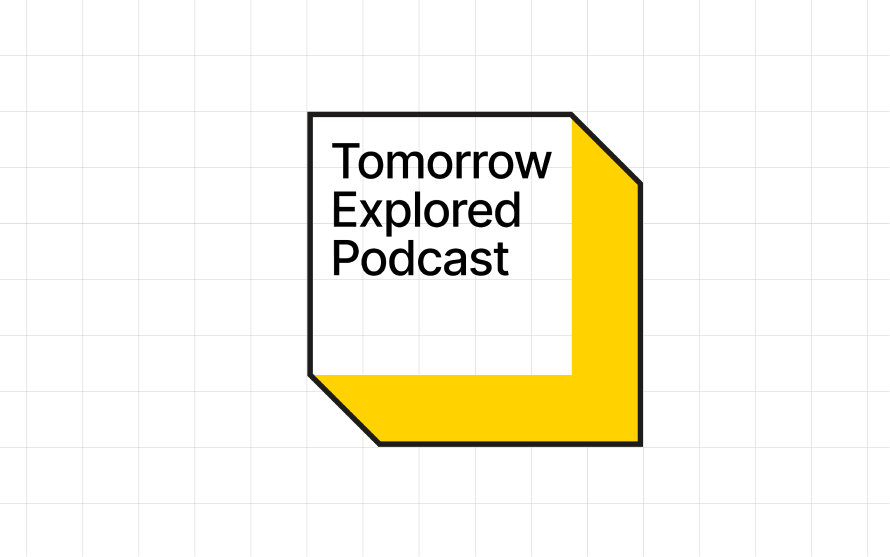2023-01-20

Marketing Lead at TX
Web3 is the next iteration of the internet, where power and control are spread out among many. It’s built on new technologies that open up opportunities for how we interact and transact online. Moreover, Web3 aims to be a more secure, open, and fair internet where you have more control over your own data and assets and where you don’t have to rely on big companies or middlemen to do things online.
However, understanding the complex Web3 space can take time and effort. This blog post explains 10 fundamental concepts to help you get started.
- Decentralization
- Blockchain technology
- Immutability
- Transparency
- Scalability
- Interoperability
- Smart contracts
- Non-Fungible Tokens
- Decentralized Applications
- Decentralized Autonomous Organizations
The cornerstones of Web3
1. Decentralization in Web3 is about spreading power and control on the internet, so no single person or company has too much control. When the power is distributed among many stakeholders, it becomes decentralized. In practice, Web3 applications usually have some degree of centralized control.
For example, in traditional centralized systems, a few large companies like Google and Facebook control a large share of online user data. With Web3, this power can be distributed among many individuals and entities, allowing for a more democratic and decentralized web experience.
2. Blockchain technology is a secure, transparent, and decentralized way of storing and sharing information. Imagine a digital ledger that is open for everyone to see. Every transaction is recorded and can be easily tracked. This ledger is maintained by a network of computers rather than a single entity, making it extremely difficult to hack or manipulate.
This technology is the backbone of Web3, making it possible for people to interact and make transactions without the need for intermediaries.
Check out our blog post on decentralization in blockchains for more in-depth knowledge.
The main principles for building with Web3
3. Immutability means that once something is recorded on Web3, it can’t be changed. Think of it like a permanent marker; once you write something down, you can’t erase it. Immutability combined with transparency is a powerful combination to create trust.
In supply chain management, for example, a product’s entire journey from the manufacturer to the end consumer can be recorded on a blockchain, providing a tamper-proof record of its origin and authenticity. This can be used to combat counterfeit products and increase transparency in the supply chain.
Another example is in voting systems, where immutability ensures that the vote cast is unchangeable, and any party can audit the integrity of the voting process. The healthcare, finance, and legal industries are a few domain examples that could benefit from tamper-proof and easy-to-audit records.
4. Transparency at its fullest means that everyone can see every interaction that happens on a blockchain. Similarly to decentralization, there are cases where limiting transparency may be warranted, such as financial transactions.
One example of transparency is in the field of online charity donations. In traditional centralized systems, it can be difficult for donors to verify that their donations reach the intended recipients and are being used for the intended purposes.
If the donations were recorded on a public blockchain, anyone could verify their location. It could also add trust to the donation process and enable more efficient and accurate reporting of the funds and their impact.
5. Scalability refers to the ability of the system to handle a large number of transactions and users without breaking down or slowing down.
Imagine a highway that can handle only a few cars simultaneously, causing delays and frustration for drivers. In the same way, a system that is not scalable will slow down or break down when too many people try to use it.
In a decentralized network, transactions are processed by many computers, also known as nodes, rather than a central server. Maintaining nodes for the decentralized network is usually incentivized in “tokens,” which can be valuable in many different ways. Thus, when demand surpasses supply, the incentives to provide server capacity grow, creating a dynamic mechanism for scaling.
It’s important to note that currently, Web3 isn’t as scalable or quick as Web2. However, developers are actively trying to solve known bottlenecks.
6. Interoperability ensures that different parts of Web3 can talk to each other and work together.
Think of interoperability as being able to use your USB-C charger with any device or being able to use your bank card at any ATM. It enables the seamless transfer of information and assets between different Web3 platforms.
For example, imagine you have an online identity. With interoperability, you can use the identity across different websites and platforms without creating a new one for each service. Similar to how you register to a website using your Gmail address but having the possibility to skip straight into the login part.
Interoperability also enables the portability of data. Let’s say your medical records are stored on one platform, but you might want to switch service providers, or you plan to move to another country. Interoperability would enable you to easily take your medical records with you without manually transferring them one by one. This means you can take your medical records without worrying about compatibility issues or when starting over with new doctors. It also means you can choose the platform that suits you best without being locked into one service.

Common applications of Web3
7. Smart contracts are like digital agreements that can automatically enforce themselves. They ensure that what was agreed upon is done without needing a middleman.
For example, in a decentralized marketplace, a smart contract can automatically release payment to a seller once a buyer confirms receipt of their purchase. This eliminates the need for a centralized intermediary like a bank or PayPal to hold and release funds. Another possible use case is insurance, where a smart contract can automatically pay out a claim to a policyholder if certain predefined conditions are met.
In addition, smart contracts enable the functionalities of Decentralized Autonomous Organizations, or DAOs, which we’ll soon get to.
8. Non-Fungible Tokens (NFTs) are unique digital assets that can be bought, sold, and traded just like traditional physical assets.
Imagine having a digital ownership certificate, like a digital proof of ownership of a property, that you can own, trade, and sell just like a physical certificate. This is what NFTs allow: creating unique digital assets that are provable ownership, scarcity, and authenticity. It opens up new opportunities for individuals and businesses to monetize and trade digital assets, enabling them to have real-world value and ownership.
One real-world example of NFTs is the use of NFTs in real estate. NFTs can represent the ownership of a property and can be traded, bought, and sold like traditional physical property. This allows for fractional ownership of properties and enables investors to invest in smaller shares of properties, making it accessible to a broader range of people. Additionally, NFTs can represent the ownership of a piece of land or a building, providing a tamper-proof record of ownership and enabling the seamless transfer of ownership without the need for intermediaries.
9. Decentralized Applications (dApps) are applications that are built on a decentralized network.
On the surface level, a dApp may look and feel like any other smart device application. As such, dApps can also be used for various things like online marketplaces, social networks, games, and financial services.
One possibility for a dApp could be providing an alternative to traditional ride-sharping apps such as Uber or Lyft. It could connect riders directly with drivers, and all transactions would be made between them without needing a middleman. This means that riders can get a ride at a lower cost, and drivers can keep more of their earnings. However, dispute situations may be troublesome to solve without an intermediary presence.
10. Decentralized Autonomous Organizations (DAOs) are organizations run by a set of rules encoded in smart contracts and governed by a community of stakeholders.
In this case, smart contracts are like a set of rules that the organization follows, and changes require some form of vote. When a decision needs to be made, members can vote using a digital voting system that is also governed by smart contracts. Once the vote is done, the smart contract automatically implements the decision. This way, the organization can operate without needing a central authority or intermediary, and all members can influence important decisions.
Imagine a company that is run by its employees, where everyone has a say in the decision-making process, and no one person is in charge. This is what a DAO is, a decentralized organization run by its members. There are many ways to distribute voting power, and some members’ votes may weigh more than others. Each DAO must decide what works best for them.
DAOs can be used to run various things like online marketplaces, social networks, games, and financial services. For instance, Data Union DAO allows individuals to pool and monetize their data. The data is collected by a group of users and is then sold to companies or organizations that want to use it for research or marketing purposes. The revenue generated from the data sales is then distributed among the DAO members, giving them a share of the profits. This concept can enable users to monetize their data and gain control over it instead of giving it away for free to centralized companies. The DAO also enables a more fair distribution of the profits generated by data instead of just a few centralized companies reaping all the benefits.
Hopefully, these explanations shed some light on the building blocks that enable Web3 development. Be mindful that Web3 still has a lot to figure out in order to achieve the same levels of user experience and technical ease as Web2.
Did I miss a crucial topic? What would you like to know more about? My feedback channels are always open!
Related posts

(The lack of) utility in Web3 – Tomorrow Explored Podcast
In this episode, we find out why Web3 projects often lack utility and what are the elements to keep in mind when setting up your Web3 idea toward success.
Find out more
For information on how we can transform your sector or business, please schedule a meeting or get in touch using the contact details below.



